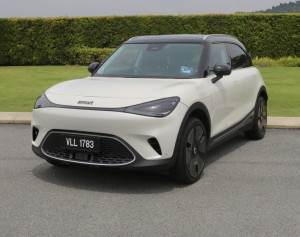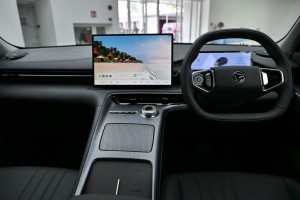Nissan’s overly ambitious goals fuel investor, supplier distrust
By BLOOMBERG | 25 November 2024
TOKYO: Nissan Motor Co.’s latest outlook downgrade has shined a light on the Japanese carmaker’s tendency to overpromise and underdeliver, testing the trust of its investors and suppliers.
The manufacturer has failed to meet its initial annual unit sales target during eight of the past nine fiscal years, four of which had a gap of more than 10%, according to data compiled by Bloomberg.
For this fiscal year through March, it lowered an initial goal by 8.1% to 3.4 million vehicles.
Nissan’s propensity to promise too much is a habit it picked up when Carlos Ghosn was in charge, according to Tatsuo Yoshida, senior auto analyst at Bloomberg Intelligence.
By contrast, Toyota Motor Corp.’s sales have never fallen short of forecasts by more than 10% during the same period, while Honda Motor Co. has seen drops of similar scale only twice.
Six years have passed since Ghosn’s surprise exit, but Nissan hasn’t been able to escape his operational style, Yoshida said, much less build a new one.
Chief executive officer Makoto Uchida, appears to realise as much, saying that "Nissan needs to be better at measuring the accuracy of its goals.”
Uchida, who forfeited half of his compensation beginning this month, also told reporters during a post-earnings briefing that the carmaker has been affected "not only by external challenges, but also by our own specific issues.”
Nissan’s troubles deepened after its rapid decline opened the door to one of Japan’s most influential activist investors.
A fund controlled by Effissimo Capital Management Pte took a 2.5% stake in the carmaker while share prices were down after it announced quarterly results earlier this month.
Speculation abounds as to why Effissimo resurfaced now, but it was a striking reminder of its dramatic 2021 standoff with Toshiba Corp., which ended in the dismissal of its CEO.
Nissan’s market capitalisation, which stands at about ¥1.5 trillion (US$9.7 billion), has been shrinking since peaking at almost ¥6 trillion in 2015. It’s now Japan’s fifth-largest carmaker as measured by market value after Toyota, Honda, Suzuki Motor Corp. and Subaru Corp.
Ghosn, who joined Nissan’s executive ranks in 1999 from Renault SA after the French carmaker rescued the company, made three commitments in his revival plan including getting the struggling company out of the red and pledged to resign should he fail to meet any of them.
In the end, all of his goals were accomplished ahead of schedule and Nissan posted record profits.
After that, the long-term goal shifted to building more capacity and reaching greater scale in order to challenge Toyota and major carmakers in the US. That put Nissan on a path to higher incentives and fleet sales as it aspired to sell more vehicles.
An aging product lineup is arguably Nissan’s biggest challenge.
While Toyota and Honda have largely refreshed their models in North America, Nissan’s last significant updates were the Pathfinder and Frontier in 2021.
The carmaker plans to roll out a plug-in hybrid version of the Rogue in fiscal 2025, followed by one using the company’s e-Power gas-electric technology the next year.
Nissan ranked behind Toyota and Honda in a survey published in November by Japanese weekly magazine Diamond, which asked major automakers’ partners to rank them based on the trustworthiness of their production plans.
The accuracy of Nissan’s sales forecasts has been "unusually low” in recent years, according to SBI Securities Co. analyst Koji Endo. For some time now, Endo added, the company has been repeating the cycle of failing to meet its targets and resorting to stop-gap measures to cut costs.
That still continues; Nissan revealed plans earlier this month to terminate 9,000 jobs and reduce capacity by a fifth, putting much of the blame on a downturn in sales across North America and China.
As the impacts of those cost cuts make their way downstream, the pain of Nissan’s rapid decline will weigh on the bottom lines of its countless suppliers and business partners.
Nissan already encountered trouble earlier this year for squeezing parts makers.
Suppliers risk incurring losses if they believe Nissan’s forecasts, Yoshida said. "That’s why they take those numbers from Nissan and aim lower.”
Tags
Autos Nissan
Reviews

7.6
Maserati GranTurismo (Mk2) Modena: Sharp and smooth operator

6.8
Triumph Tiger 900 GT Pro: Multi-talented adventurer

Hyundai Ioniq 5 N: Born rascal

6.6
Husqvarna Svartpilen 401: Inspiring retro design

8.8
smart #1 (Premium): Agile, engaging, roomy, premium motoring

6.6
Suzuki V-Strom 250 SX: Multi terrain warrior

Proton e.MAS 7 impresses in quick dynamic driving exercises

Nissan Kicks e-Power: Kicking off a new efficiency
Videos

StarCarSifu Editors' Choice Awards 2024: Top winners

The Snowball – Lamborghini’s Heartwarming Christmas Story of...

EVOGO battery swapping solution showcased at IAA Mobility 20...
